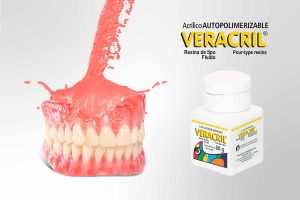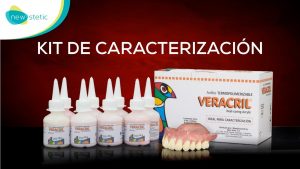Key Messages
• Dental restorations with dental amalgam last longer and cost less compared with restorations with composite resins.
• The evidence shows no clinically important differences in the safety of amalgam compared with composite resin dental restorations.
• Whereas the environmental impact of the release of mercury from dental amalgam in Canada is small, the environmental impact of chemicals included in composite resin materials is not known.
• Shared decision-making between dental providers and patients is encouraged to address the use of the optimal dental material for a given situation.
Context
Dental caries (also known as tooth decay or cavities) is a significant oral health issue worldwide. In Canada, based on data from 2007 to 2009, 96% of adults and approximately 60% of children and adolescents are affected by dental caries. Standard treatment aims to restore the structure of the affected tooth using filling material to replace decayed dental tissue. The most commonly used filling
materials for dental restorations are amalgam and composite resin.
Technology
Amalgam fillings are a mixture of metals, including mercury (about 50%), silver, tin, and copper. These fillings are strong and they last for a long time. Because they are silver in colour, they are also known as “silver” fillings.
Composite resin fillings are made of plastic and glass compounds, which can be colour-matched to the tooth being restored, giving it an aesthetic advantage over the silver colour of amalgam. Newer formulations of these materials have improved their capacity to withstand stress and wear. Composite fillings are also known as “white” fillings.
Issue
As amalgam is partly composed of mercury, a known toxic substance, there are concerns about the safety of this filling material for human health, and for the environmental impact of mercury released from amalgam waste generated by dental offices. Resin-based composite is the most common alternative dental filling material to amalgam.
However, concerns have also been raised about the potential for toxicity to human health from composite resin compounds, such as bisphenol A. With an increasing reliance on resin-based composite restorations, there is a need to understand the potential implications for Canadian dental care access, practice, and affordability.
Methods CADTH conducted a health technology assessment to compare the clinical efficacy, safety, and cost-consequence of dental amalgam and composite resin for the treatment of dental caries. A review of the evidence on patient experiences and perspectives, ethical issues, implementation considerations, and the potential environmental impact of these dental restoration materials was also included in the health technology assessment.
Results
Clinical Review
Few studies comparing dental amalgam with composite resin restorations are available. One systematic review (2014) reporting a meta-analysis of two studies including 3,010 restorations found a statistically significantly higher risk of restoration failure and secondary caries with composite resin than with amalgam. While an update to the systematic review found one additional randomized controlled trial (2016) reporting no difference in restoration failure and secondary caries with either treatment, the small sample size (40 restorations) in this newer study limits the generalizability of its findings.
In an additional systematic review addressing safety, significantly higher urinary mercury levels were reported among children with amalgam restorations compared to children with composite resin restorations; however, none of the measurements approached levels known to be toxic. Longer-term follow-up of the children suggests that urinary mercury levels in children with dental amalgam restorations may lessen over time. While some differences were reported in certain measures (e.g., post-operative pain, renal effects), there was no consistent or clinically important pattern of benefit or harms for either dental restoration material. No differences were reported in neurological symptoms or immune function between the two groups.
Economic Review
A cost-consequence analysis comparing amalgam and composite resin restorations of permanent posterior teeth found that, on average, amalgam restorations have a longer life and cost less.
Moreover, crown installation or tooth extraction may occur later in life with amalgam than with composite resin restorations. Whereas composite resin restorations take slightly more time to perform, the impact on patient or caregiver productivity is minimal. Using amalgam requires dental clinics to be equipped with amalgam separators to avoid mercury waste from reaching Canadian surface waters. These have significant costs to dental clinics, but, these costs are likely factored in the dental fees. (Note: These results are limited by a lack of comparative evidence and data on the natural history of treatment outcomes in restored teeth — assumptions were required to inform the economic analysis.)
Patient Experiences and Perspectives
Some patients report struggling to be understood as they search for a cause of their sense of ill health, which they attribute to dental amalgam restorations (limited evidence based on four qualitative
studies). As no studies were identified addressing patients’ experiences with dental amalgam other than health complaints or addressing patients’ experiences with composite resin restorations, the broader set of patient experiences with either restoration material is not known.
Implementation Issues In Canada, there are no specific policies that dictate the use of one restorative material over another in dental practices. Dentists consider patient profile and clinical indications prior to deciding on a dental restoration material. Other factors that influence the use of each of these materials include funding and reimbursement; dental provider setting (public or private); provider attitudes; education and training; and patient perceptions, education, preferences, and sociocultural attitudes toward dental restoration materials.
Ethical Issues
Compliance with regulations for the appropriate handling of amalgam waste, conflicts of interest or financial incentives for selecting one material over another, the need for public health education and clear communication to patients about the nature of the materials and corresponding risks and benefits, and consideration of informed consent were identified among the ethical issues to be considered
when deciding on the use of dental restoration materials.
Environmental Issues
A review of the evidence on environmental risks associated with amalgam and composite resins found that the contribution of mercury, from its use in dentistry, into the Canadian ecosystem is relatively small. There is limited evidence on the environmental impact of composite resins. No studies comparing the environmental risks of the two materials were identified.
Read more about CADTH and its review:
https://www.cadth.ca/dental-amalgams-compared-composite-resin






